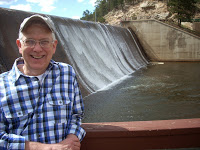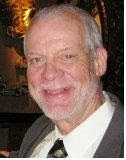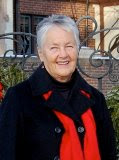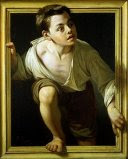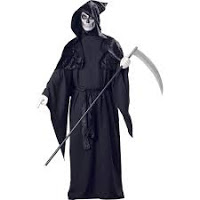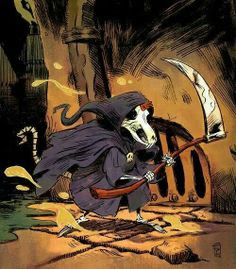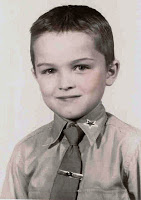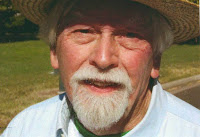I
moved into my apartment on Capitol Hill soon after reaching Denver in my fifty-second
year. There I lived in the third block south of Colfax Avenue, that old highway
that has claimed to be the longest main street in America. Not owning a car, I
walked everywhere, but was surprised when a friend asked, “Aren’t you afraid to
walk along East Colfax?”
moved into my apartment on Capitol Hill soon after reaching Denver in my fifty-second
year. There I lived in the third block south of Colfax Avenue, that old highway
that has claimed to be the longest main street in America. Not owning a car, I
walked everywhere, but was surprised when a friend asked, “Aren’t you afraid to
walk along East Colfax?”
“No,”
I immediately answered. “It’s just like the main street in the town where I
grew up.” I wasn’t freaked out to walk down an avenue with bars, tattoo
parlors, Army surplus stores, small groceries, gas stations, two-story
buildings with markets below and apartments or offices above, theatres, people
of various races, even drunks on the street. Strolling along Colfax always
reminded me of my hometown Junction City, Kansas that was located adjacent to the
US Army Base, Fort Riley.
I immediately answered. “It’s just like the main street in the town where I
grew up.” I wasn’t freaked out to walk down an avenue with bars, tattoo
parlors, Army surplus stores, small groceries, gas stations, two-story
buildings with markets below and apartments or offices above, theatres, people
of various races, even drunks on the street. Strolling along Colfax always
reminded me of my hometown Junction City, Kansas that was located adjacent to the
US Army Base, Fort Riley.
I
had spent my childhood and early teen years living in the third block west of
Washington Street, the long main street that offered in addition to groceries,
clothing, theaters, lawyers, and real estate, a variety of beers, tattoos, Army
surplus, pawned goods, drunks, and prostitutes. My family lived on West
Eleventh Street, but the more colorful array of folks and their bad habits
rarely made it that far off the main drag.
had spent my childhood and early teen years living in the third block west of
Washington Street, the long main street that offered in addition to groceries,
clothing, theaters, lawyers, and real estate, a variety of beers, tattoos, Army
surplus, pawned goods, drunks, and prostitutes. My family lived on West
Eleventh Street, but the more colorful array of folks and their bad habits
rarely made it that far off the main drag.
Washington
Street ran for eighteen blocks from Grand Avenue on the north, the gateway to
Fort Riley, to I-70 on the south—well eventually when the Interstate made its
way that far west. On the south end of Washington Street our family ate at the
Circle Cafe that offered Cantonese and American food. Dad ordered Chinese food,
Mom her favorite fried chicken, and we kids our regular hamburger, French fries,
and a Coke. Later, when I began working at the store, I had lunch sometimes at
the Downtown Cafe where, much to my junior high delight, I discovered chicken
fried steaks. I already knew the middle part of Washington Street from walks
with Mom when she shopped, but also from visits to the two Hoyle’s IGA stores, both
located along Washington, one at 9th, the other at 13th.
Then there was the Kaw Theater where we watched movies and ate the homemade
cinnamon and horehound candies made by Mr. Hoyle, the owner and the father of my
Aunt Barbara. Duckwall’s and Woolworth’s stores sat on the east side of the
street in the same block as Cole’s Department Store where Mother used to model
clothes on occasion. I had seen photos of her as a young model posing on the
runway.
Street ran for eighteen blocks from Grand Avenue on the north, the gateway to
Fort Riley, to I-70 on the south—well eventually when the Interstate made its
way that far west. On the south end of Washington Street our family ate at the
Circle Cafe that offered Cantonese and American food. Dad ordered Chinese food,
Mom her favorite fried chicken, and we kids our regular hamburger, French fries,
and a Coke. Later, when I began working at the store, I had lunch sometimes at
the Downtown Cafe where, much to my junior high delight, I discovered chicken
fried steaks. I already knew the middle part of Washington Street from walks
with Mom when she shopped, but also from visits to the two Hoyle’s IGA stores, both
located along Washington, one at 9th, the other at 13th.
Then there was the Kaw Theater where we watched movies and ate the homemade
cinnamon and horehound candies made by Mr. Hoyle, the owner and the father of my
Aunt Barbara. Duckwall’s and Woolworth’s stores sat on the east side of the
street in the same block as Cole’s Department Store where Mother used to model
clothes on occasion. I had seen photos of her as a young model posing on the
runway.
I
got to know Washington Street. North, between 15th and 16th
streets stood Washington School where I attend grades one through five. On
occasion I got to be the crossing guard on the main street, wearing the white
halter that symbolized enough authority to push the button for the stop light
and walk halfway across the four-lane street with a stop sign. No accidents
occurred on my watch. The school playground for older students was on
Washington Street so I saw its activity from swings, monkey bars, and see saws.
Walking down that street one afternoon when our class went on an outing to
visit the local potato chip factory seems as real today as it was then. Across
the street from the school was Kroger’s, and across the street from our store
that Dad managed, sat Dillon’s. I knew these stores to be the competition. Next
to Dillon’s was the Dairy Queen where we kids liked to go on Sunday nights
after church. I knew Washington Street.
got to know Washington Street. North, between 15th and 16th
streets stood Washington School where I attend grades one through five. On
occasion I got to be the crossing guard on the main street, wearing the white
halter that symbolized enough authority to push the button for the stop light
and walk halfway across the four-lane street with a stop sign. No accidents
occurred on my watch. The school playground for older students was on
Washington Street so I saw its activity from swings, monkey bars, and see saws.
Walking down that street one afternoon when our class went on an outing to
visit the local potato chip factory seems as real today as it was then. Across
the street from the school was Kroger’s, and across the street from our store
that Dad managed, sat Dillon’s. I knew these stores to be the competition. Next
to Dillon’s was the Dairy Queen where we kids liked to go on Sunday nights
after church. I knew Washington Street.
As
older elementary kids we neighborhood boys began to walk the street without
adults. There we discovered the bars, a variety of shops including the Army
Surplus stores where we looked longingly at the gear of soldiers, the
barbershop where my best friend Keith got his flattop haircuts and where I
first saw professional wresting on TV, and tattoo parlors where we’d choose our
future body ornamentation from designs displayed in the windows. From
Washington Street, we’d gaze down East Ninth where we knew several houses of
prostitution stood. We’d continue on to Duckwalls and Woolworth’s where we
loved to look at toys and sometimes swiped them, to the Junction Theater where
we ogled the ads for adult films we never got to watch, or to Clewel’s Drug
Store where we drank sodas at the fountain where they mixed drinks and I often
ordered a grape Coke. Occasionally we’d walk on to Dewey Park where we saw
small children dancing at the city band concerts, where a statue of the 19th
century Admiral George Dewey with his drooping handlebar mustache stood atop a
classical archway, and where large WWII cannons stood sentry. By day people sat
there in the shade of huge elms and more than once on hot summer afternoons we
waded in the fountain that dominated the middle of the park.
older elementary kids we neighborhood boys began to walk the street without
adults. There we discovered the bars, a variety of shops including the Army
Surplus stores where we looked longingly at the gear of soldiers, the
barbershop where my best friend Keith got his flattop haircuts and where I
first saw professional wresting on TV, and tattoo parlors where we’d choose our
future body ornamentation from designs displayed in the windows. From
Washington Street, we’d gaze down East Ninth where we knew several houses of
prostitution stood. We’d continue on to Duckwalls and Woolworth’s where we
loved to look at toys and sometimes swiped them, to the Junction Theater where
we ogled the ads for adult films we never got to watch, or to Clewel’s Drug
Store where we drank sodas at the fountain where they mixed drinks and I often
ordered a grape Coke. Occasionally we’d walk on to Dewey Park where we saw
small children dancing at the city band concerts, where a statue of the 19th
century Admiral George Dewey with his drooping handlebar mustache stood atop a
classical archway, and where large WWII cannons stood sentry. By day people sat
there in the shade of huge elms and more than once on hot summer afternoons we
waded in the fountain that dominated the middle of the park.
I
never entered any of the many bars but was fascinated by their neon lights,
dark spaces with cool air wafting strange odors out the front doors. I wondered
about the men we saw inside sitting at the bar drinking beers, usually quiet
but sometimes with juke box blaring and loud talk and laughter, especially
around payday when the GIs came to town to squander their meager paychecks in
the dives on Washington Street and the whore houses on East Ninth. The
challenging presences rarely made it over to where I lived, but of course, we
boys had planned all our escape routes in case we might have run-ins with drunks.
Our survival tactics were actually just another form of play; after all we were
kids, boys with dreams of self-sufficiency, survival, and strength.
never entered any of the many bars but was fascinated by their neon lights,
dark spaces with cool air wafting strange odors out the front doors. I wondered
about the men we saw inside sitting at the bar drinking beers, usually quiet
but sometimes with juke box blaring and loud talk and laughter, especially
around payday when the GIs came to town to squander their meager paychecks in
the dives on Washington Street and the whore houses on East Ninth. The
challenging presences rarely made it over to where I lived, but of course, we
boys had planned all our escape routes in case we might have run-ins with drunks.
Our survival tactics were actually just another form of play; after all we were
kids, boys with dreams of self-sufficiency, survival, and strength.
Life
changed for me over the decades between my fifteenth birthday when we left
Junction City and my fifty-first birthday when I showed up along Denver’s
Colfax Ave. My experiences along the unusual Kansas main street prepared me for
living in the city. In my fifties I continued to spend time among people of
various races and backgrounds. I ate Chinese food, chicken fried steaks, and
really nice hamburgers along Colfax. In contrast to my childhood activities, I did
go into bars and did get a tattoo. I still didn’t go into whorehouses. In this
real, really large city I walked down many streets and greeted many people. I
shared a new life with them but still kept my eyes open to possible developing
trouble and chose my routes with the wisdom I had learned in childhood walking
along Washington Street with my friends. Then I walked unafraid but never
unaware. I still do.
changed for me over the decades between my fifteenth birthday when we left
Junction City and my fifty-first birthday when I showed up along Denver’s
Colfax Ave. My experiences along the unusual Kansas main street prepared me for
living in the city. In my fifties I continued to spend time among people of
various races and backgrounds. I ate Chinese food, chicken fried steaks, and
really nice hamburgers along Colfax. In contrast to my childhood activities, I did
go into bars and did get a tattoo. I still didn’t go into whorehouses. In this
real, really large city I walked down many streets and greeted many people. I
shared a new life with them but still kept my eyes open to possible developing
trouble and chose my routes with the wisdom I had learned in childhood walking
along Washington Street with my friends. Then I walked unafraid but never
unaware. I still do.
© 16 August, 2012 – Denver
About
the Author
the Author
Phillip Hoyle
lives in Denver and spends his time writing, painting, and socializing. In
general he keeps busy with groups of writers and artists. Following thirty-two
years in church work and fifteen in a therapeutic massage practice, he now
focuses on creating beauty. He volunteers at The Center leading the SAGE
program “Telling Your Story.”
lives in Denver and spends his time writing, painting, and socializing. In
general he keeps busy with groups of writers and artists. Following thirty-two
years in church work and fifteen in a therapeutic massage practice, he now
focuses on creating beauty. He volunteers at The Center leading the SAGE
program “Telling Your Story.”
He also blogs at artandmorebyphilhoyle.blogspot.com
